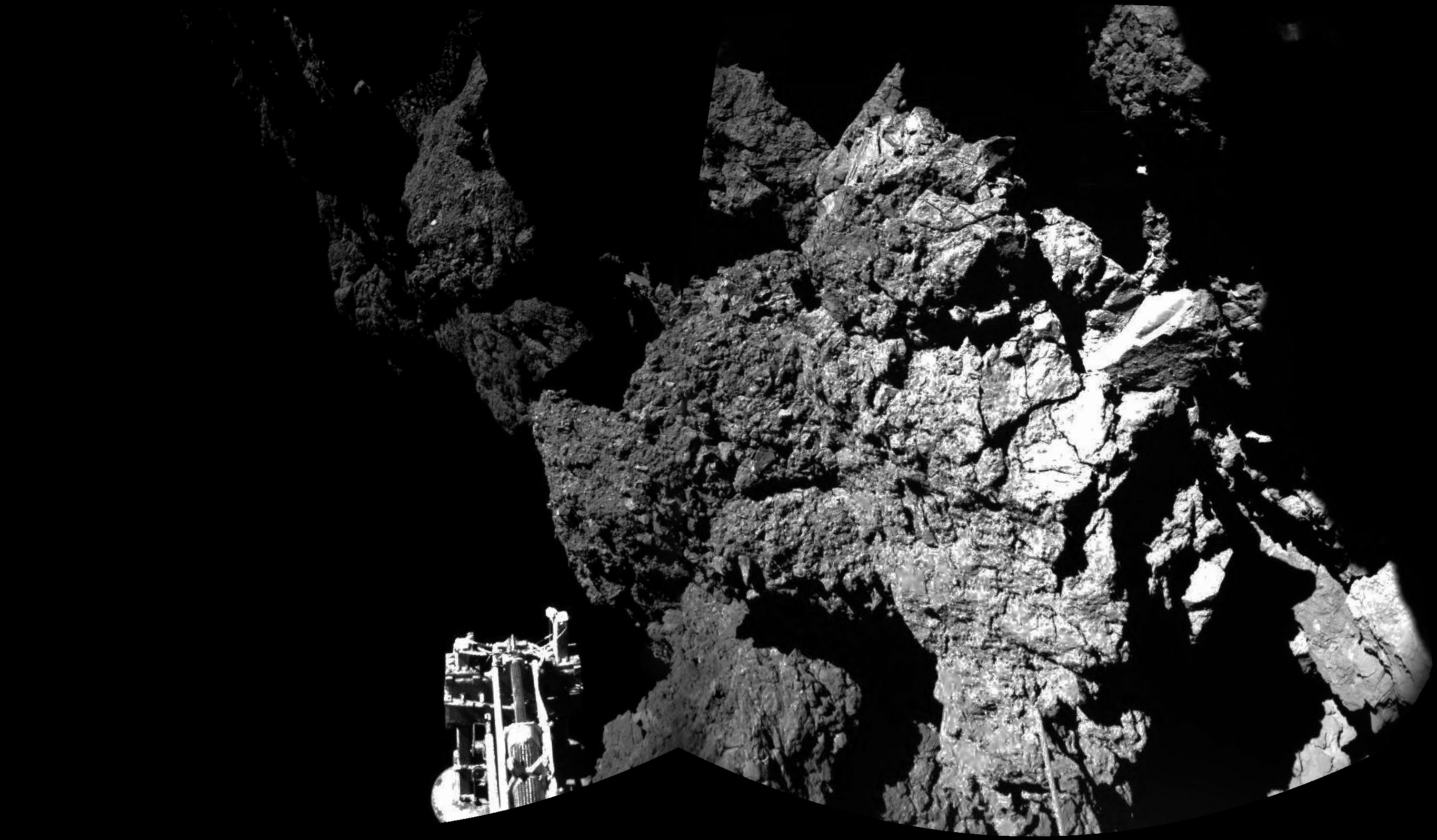Those problems have somewhat tempered the celebration of a new step in space exploration, after the lander ended its 10-year journey by landing on a comet more than 300 million miles from Earth Wednesday.
 |
| Philae lander’s CIVA camera |
The fridge-size lander is standing on two of its three legs, and its solar panels are sitting in the shadow of a nearby cliff face forming the edge of a large crater where Philae was supposed to have made a soft touch-down on the comet, the European Space Agency (ESA) said.
Philae lander will travel with the comet as it continues its journey around the Sun. It should witness the plumes of vapourised gases emitted from the icy surface as the comet feels the rising heat of its orbital summer.
 |
| http://bcove.me/58njfmjr |
 |
| In pictures: European Space Agency's Rosetta mission |



